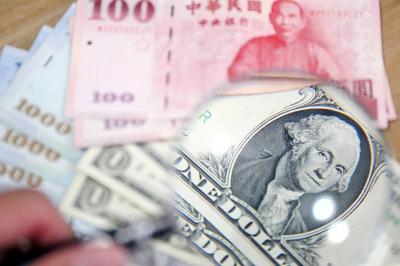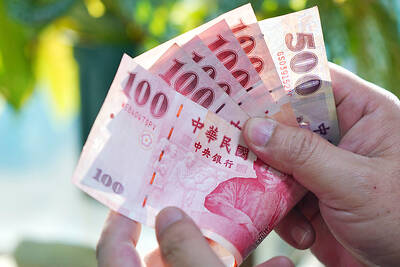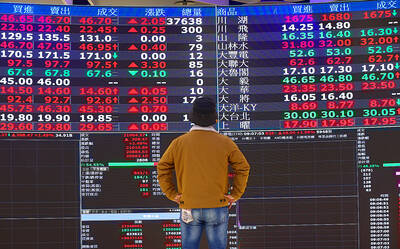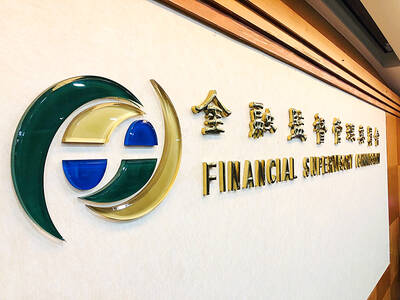Just as the Japanese comic book series Slam Dunk (灌籃高手) grabbed the hearts of Taiwan's basketball fans, another popular series, Hikaru No Go (棋靈王) has now become a craze with local youngsters, turning the traditional Chinese game of "go" into a profitable business.
"The widespread popularity that Japanese comics and cartoons have gained here over the past years has attracted an increasing number of people, mostly school children, to learn to play go," said Chin Shih-min (秦世敏), secretary general of the World Chinese Wei Qi Federation (
Go, known as wei qi in Mandarin, has traditionally been viewed as a pastime for the elderly.
"But now parents are sending their kids to after-school classes to acquire skills and at the same time improve their patience and concentration on schoolwork," said Chin, whose passion for the game began in 1969 when the Taiwanese go master Lin Hai-feng (林海峰) gained fame in Japan.
Early last year, an annual go tournament held in Taipei attracted 3,600 young players -- an astonishing sixfold increase from the first tournament in 1998, when just 600 people participated.
Within less than three years, go students nationwide have mushroomed to an estimated two million, said Kevin Zang (臧聲遠), chief editor of the local monthly magazine Career (就業情報), published by Career Consulting Co (就業情報資訊公司), at an event it held yesterday to give tips for success to small businesses.
"The effect created by the comic book fever will only snowball to attract more novice players," Zang said. "The situation will not be affected if one day Hikaru No Go fades from the market."
Zang cited United Microelectronics Corp (UMC, 聯電) chairman Robert Tsao (曹興誠) and CMC Magnetics Corp (中環) chairman Bob Wong (翁明顯) as prominent go lovers, to illustrate that go has become popular among executives in the high-tech sector -- another indication of how the game is becoming a lucrative business.
But the nation's qualified go teachers number fewer than 1,000, Chin said, pushing up these experts' salary levels.
"Some senior instructors in the so-called cram schools can earn up to NT$1.2 million (US$37,000) a year with bonuses delivered in both summer and winter," he added.
The fever has also driven up sales in go-related products, including comic books, animation, books and Web sites offering online tournaments.
"Setting aside how much money one can make by learning go, its spirit and the skills one can gain through learning it, should be key elements in revitalizing the traditional game," said Christina Ongg (翁靜玉), the magazine's chairwoman.

The US dollar was trading at NT$29.7 at 10am today on the Taipei Foreign Exchange, as the New Taiwan dollar gained NT$1.364 from the previous close last week. The NT dollar continued to rise today, after surging 3.07 percent on Friday. After opening at NT$30.91, the NT dollar gained more than NT$1 in just 15 minutes, briefly passing the NT$30 mark. Before the US Department of the Treasury's semi-annual currency report came out, expectations that the NT dollar would keep rising were already building. The NT dollar on Friday closed at NT$31.064, up by NT$0.953 — a 3.07 percent single-day gain. Today,

‘SHORT TERM’: The local currency would likely remain strong in the near term, driven by anticipated US trade pressure, capital inflows and expectations of a US Fed rate cut The US dollar is expected to fall below NT$30 in the near term, as traders anticipate increased pressure from Washington for Taiwan to allow the New Taiwan dollar to appreciate, Cathay United Bank (國泰世華銀行) chief economist Lin Chi-chao (林啟超) said. Following a sharp drop in the greenback against the NT dollar on Friday, Lin told the Central News Agency that the local currency is likely to remain strong in the short term, driven in part by market psychology surrounding anticipated US policy pressure. On Friday, the US dollar fell NT$0.953, or 3.07 percent, closing at NT$31.064 — its lowest level since Jan.

The New Taiwan dollar and Taiwanese stocks surged on signs that trade tensions between the world’s top two economies might start easing and as US tech earnings boosted the outlook of the nation’s semiconductor exports. The NT dollar strengthened as much as 3.8 percent versus the US dollar to 30.815, the biggest intraday gain since January 2011, closing at NT$31.064. The benchmark TAIEX jumped 2.73 percent to outperform the region’s equity gauges. Outlook for global trade improved after China said it is assessing possible trade talks with the US, providing a boost for the nation’s currency and shares. As the NT dollar

The Financial Supervisory Commission (FSC) yesterday met with some of the nation’s largest insurance companies as a skyrocketing New Taiwan dollar piles pressure on their hundreds of billions of dollars in US bond investments. The commission has asked some life insurance firms, among the biggest Asian holders of US debt, to discuss how the rapidly strengthening NT dollar has impacted their operations, people familiar with the matter said. The meeting took place as the NT dollar jumped as much as 5 percent yesterday, its biggest intraday gain in more than three decades. The local currency surged as exporters rushed to